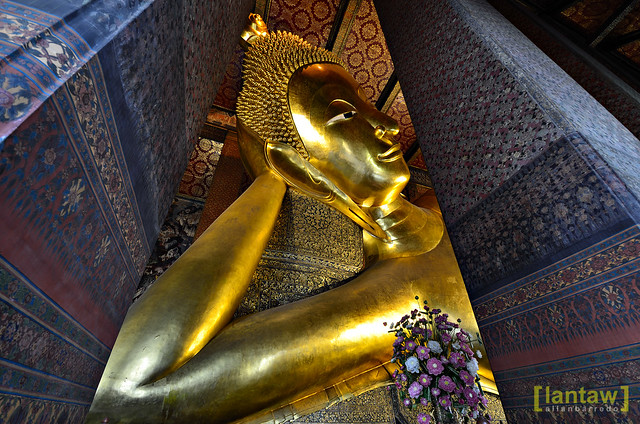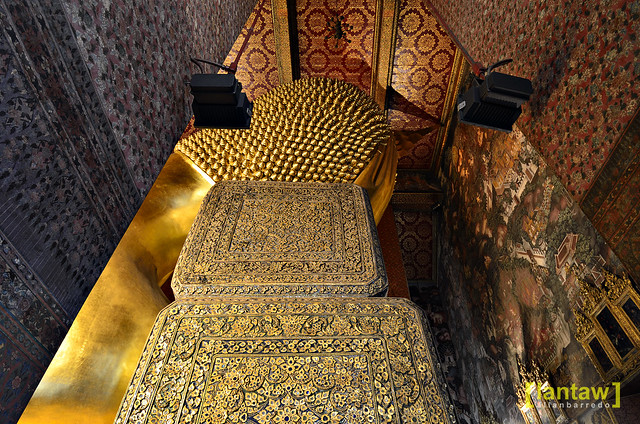Thailand never seem to ran out of beautiful wats or temples to visit. One such notable temple in Bangkok is Wat Pho, also known as the Temple of the Reclining Buddha. It is situated right next to the Grand Place so it a perfect place to head to after visiting the Grand Palace, or in our case, after we did not make the 3PM cut-off for visitors to the palace.
Our first stop after a few days in Chiang Mai was the palace, unfortunately we only made it up to the gate. The day was far from over and a quick check of the map in my phone showed a wat nearby, so off we went. I honestly was not aware of the significance of Wat Pho (you can attribute that to the lack of research), and was pleasantly surprised of what we saw there (sometimes less research is good!)

facade
Reclining Buddha
I've seen images of the Reclining Buddha in some of the temples in Chiang Mai, but certainly not one as huge as this. Its 15 meters high and 43 meters long, resting on two box pillows made of blue glass mosaic.
Buddha resting on box pillows
Everything, from the walls to the ceiling, to Buddha's box pillows are full of intricate details. Buddha's feet, measuring 3 meters high by 4.5 meters long, are invalid with mother-of-pearl. The feet has 108 panels that displays auspicious symbols of the Buddha like flowers and white elephants.
Temple grounds
Like most wats, Wat Pho's complex consist of various structures. There two walled compounds - the northern compound is where the reclining Buddha is as well the massage school (Wat Pho is considered to be the birthplace of traditional Thai massage), while the southern compound is where the monastery is.Chedi Rai
Within the complex are 91 chedis, four viharas (worship halls), and a central shrine (bot). The complex is also home to more than 1000 Buddha images.
ornate roof of one of the viharas
richly decorated chedi












No comments:
Post a Comment